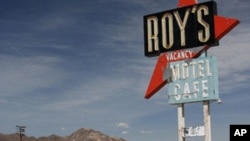If you’ve ever seen an American police show on TV or in the movies, you’ve seen a dispatcher or an officer on patrol communicate using so-called “ten-codes.” These are shorthand codes that have different meanings.
The most famous, “10-4,” simply means, “I acknowledge what you’ve just told me.” It has even spread into everyday language, as in “10-4, good buddy!”
Your “10-20” is your location, “10-8” means you or your vehicle is in service, and “10-7” means just the opposite, that you’re going out of service. And there are many more ten codes.
This cop jargon - later borrowed by long-distance truckers - originated with the Illinois State Police in 1937.
Back then, communication with units in the field was sometimes spotty, and the number of police channels was limited. There was no time for small talk in a car chase or confrontation with criminals.
But after two catastrophic events - the terrorist attacks on the Pentagon and New York’s World Trade Center in 2001, and Hurricane Katrina’s devastating swirl into Louisiana, when chaos often reigned and officers from many agencies were frantically trying to communicate with each other - many police departments abandoned the 10-4 codes.
The latest to do so, the Maryland State Police, have switched to what’s called “Common Language Protocol,” meaning simple, plain language instead of codes that people have to memorize and sometimes get confused.
So instead of a dispatcher’s saying, “34 Bravo 2, what’s your 10-20?” he or she would say, “34 Bravo 2,” where are you? And the officer would ideally reply, “I’m at Pine and Chestnut streets.”
Of course, that still leaves the Alpha-Bravo codes, which assign a word to every letter in the alphabet to avoid spelling mixups in two-way chatter, but one step at a time.











